The Royal Swedish Academy of Sciences recognized this morning three researchers with the 2020 Nobel Prize in Physics for revealing the irrefutable existence of the supermassive black hole located in the center of our galaxy, whose mass was measured by the Mexican astronomer Luis Felipe Rodríguez since 1978.
The Nobel Prize in Physics was awarded to the study of "one of the darkest secrets in the Universe," said Göran K. Hansson, secretary of the Royal Swedish Academy of Sciences, and to the contributions of Britain's Roger Penrose, along with astronomers Reinhard Genzel, from Germany, and Andrea Ghez, from the United States, who thus became only the fourth woman to be recognized with the Nobel Prize in Physics in the history of these medals.
Penrose is awarded for "discovering that the formation of a black hole is a robust prediction of the general theory of relativity," while Genzel and Ghez were recognized for "the discovery of a supermassive compact object at the center of our galaxy”, Hansson announced.
For Luis Felipe Rodríguez, that phrase is quite familiar. His thesis with which he obtained his doctorate degree at Harvard University in 1978, entitled “Radio recombination line observations of the ionized gas in the galactic center", revealed precisely one of the first signs of the presence of a supermassive source in the center of our galaxy.
Astronomer Luis Felipe Rodríguez talks about the relevance of the Nobel Prize in Physics 2020, a topic to which he contributed some 40 years ago.
At that time they were not called black holes simply because there was too much doubt that they existed. “The black hole concept was very disdained upon but this was changing. Nowadays, everyone accepts it, but it did take a lot of work, Einstein himself was very skeptical that there were black holes”, Rodríguez tells IFUNAM News.
Writer Marcia Bartusiak documents this story in her book "Black Hole: How an Idea Abandoned by Newtonians, Hated by Einstein, and Gambled on by Hawking, Became Loved."
“For more than half a century, physicists and astronomers have been in a heated dispute over the possibility of black holes in the universe. The strange notion of an abyss of space-time from which nothing escapes, not even light, seemed to confuse all logic,” says Bartusiak.
Luis Felipe Rodríguez, who is currently a researcher at UNAM's Institute of Radio Astronomy and Astrophysics, was one of the few Mexicans who fought the first battles to change this trend, understanding that the Universe is made up of titanic energy sources that can only be understood through the light of relativity, and thereby achieve that black holes could be discussed, described and, even more recently, photographed.
The first signs
Since the 1970s, radio astronomers had found that in the center of our galaxy there was a fairly intense source of radio waves and from that time it began to be suspected that it could be a black hole, since it was known that ionized gas burned around that source.
But the "magic" of confirming its existence was not (nor is it now) an easy task, because the center of the galaxy cannot be seen with the classical techniques of visible astronomy due to the excess of gas and cosmic dust in the line of sight.
So, for his work, Luis Felipe Rodríguez used radio waves, which can pass through that dust. And specifically, he used radio telescopes, very large metal parabolas, to pick up the radio waves coming from the center.
"In particular, we observed what is called a line, a hydrogen emission, and we saw it very wide, and that led us to think of a black hole," says Rodríguez. "I studied around the black hole and found that the gas could be interpreted as rotating very fast and that if there wasn't something pulling it gravitationally, that gas would have spread long ago".
Luis Felipe Rodríguez calculated the necessary mass and obtained one of 5 million solar masses, that is, 5 million times that of the Sun. Although it was already known that there could be a black hole there, Rodríguez's contribution was to give to the world one of the first determinations of its mass.
His work, published in 1979, earned him the Robert J. Trumpler Prize, which recognizes the best astronomy doctoral thesis done in North America.
The future has arrived: measuring the movement of the stars
It was at that time that the Mexican met at Harvard who today was recognized with the Nobel Prize in Physics, the German Reinhard Genzel. After Rodríguez's work, Genzel conducted another investigation, published in 1984, to study the same gas and concluded that it was indeed a supermassive object, but his estimate was 3 million solar masses.
However, none of these works had enough impact. "What happened is that the gas is very easy to move with an explosion of a star, with what we call winds, and people said: 'No, that is moving for another reason, it is not a black hole.' So Genzel, intelligently, realized that what had to be demonstrated was movement, but not of the gas, which is so susceptible to other effects, but of stars ”, explains the astronomer.
And it hit the target. Although radio waves are used to better study gas, what Genzel used to measure the motion of stars was infrared waves, which can also pass through dust. The movement of the gas can be questioned since it can be due to other causes, but in the case of the movement of stars, using infrared, it is very difficult to argue that it could be due to something other than the gravity of a very massive body.
So Genzel went down that route. He started a program to study the stars that were around that black hole and after more than 35 years of intense work, he and his team were able to see how these stars are moving around the black hole quickly and based on that they were able to determine the currently accepted mass: 4 million times that of the Sun. "In other words, it was between his initial estimate and mine," says Rodríguez.
At the same time, a young astronomer, Andrea Ghez, who today shares the Nobel Prize in Physics with Genzel, had started a similar program, also using infrared observations, which led her, practically at the same time, to the same conclusion: there was a need for a body very massive that did not emit light.
Animation of the motion of the stars around the supermassive black hole at the center of our Galay (marked with a star), as observed by the group of Andrea Ghez.
The roads that diverge
Rodríguez believes that another story would have been if he had decided to stay in the United States instead of returning to Mexico after completing his doctorate.
“It is clearly an interesting fork. I returned to Mexico with very limited resources, I needed people and equipment that we had to get from abroad”, he says.
Genzel, on the other hand, had strong support in Germany. “He is a very important research leader and received great support to build these cameras that capture infrared radiation and that allowed them to determine accurately the position of the stars. Andrea Ghez was doing the same in the United States. Then you see how, in effect, careers diverge: a person who is in the developed world can give flight to his or her ambition and desires and do significant things; in Mexico, we have it very difficult and you have to sacrifice things from your career to help promote science”.
Despite this, despite the time that has passed, and despite the career that did not continue in a first world country, Rodríguez, one of the most recognized and awarded Mexican scientists, is satisfied with the contribution he made in those years.
“I think it was an interesting contribution because it kept alive this idea that there was a very massive body there. The truth is that this was not believed by people until it was demonstrated with the movement in the stars, but it served to search for that black hole, "says the astronomer.
His work served to follow the essence of science itself (and that goes beyond awards): seeking answers.
By Aleida Rueda (IFUNAM)
Original story:
Related links:
Biographical sketch of Luis Felipe Rodríguez by Colegio Nacional




